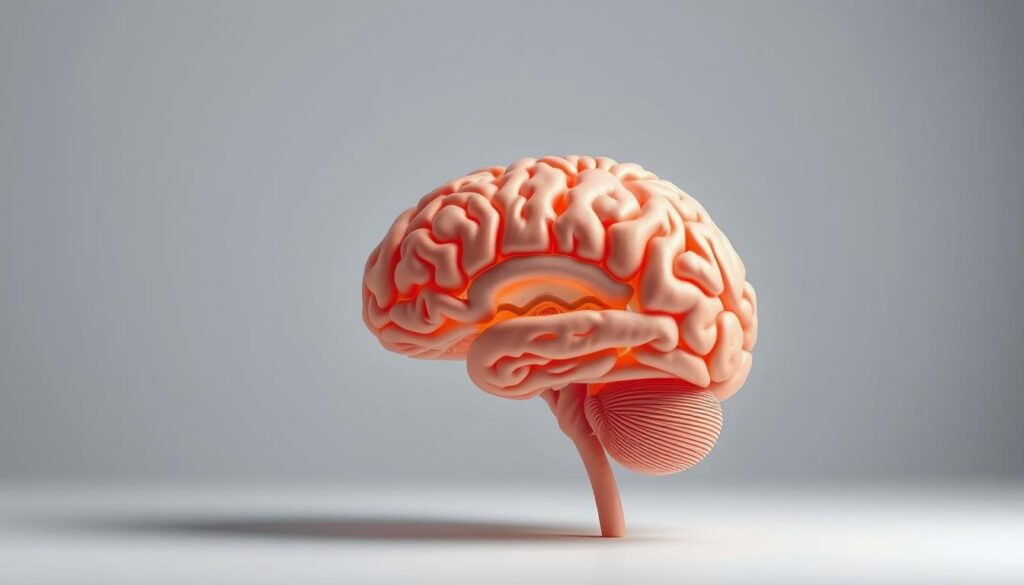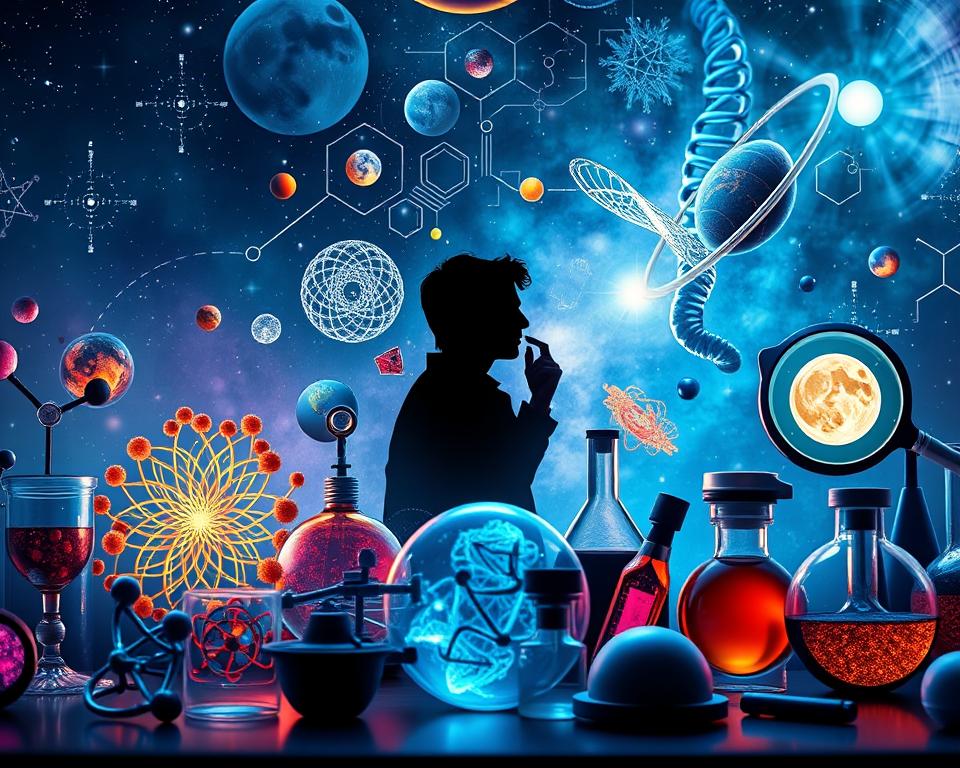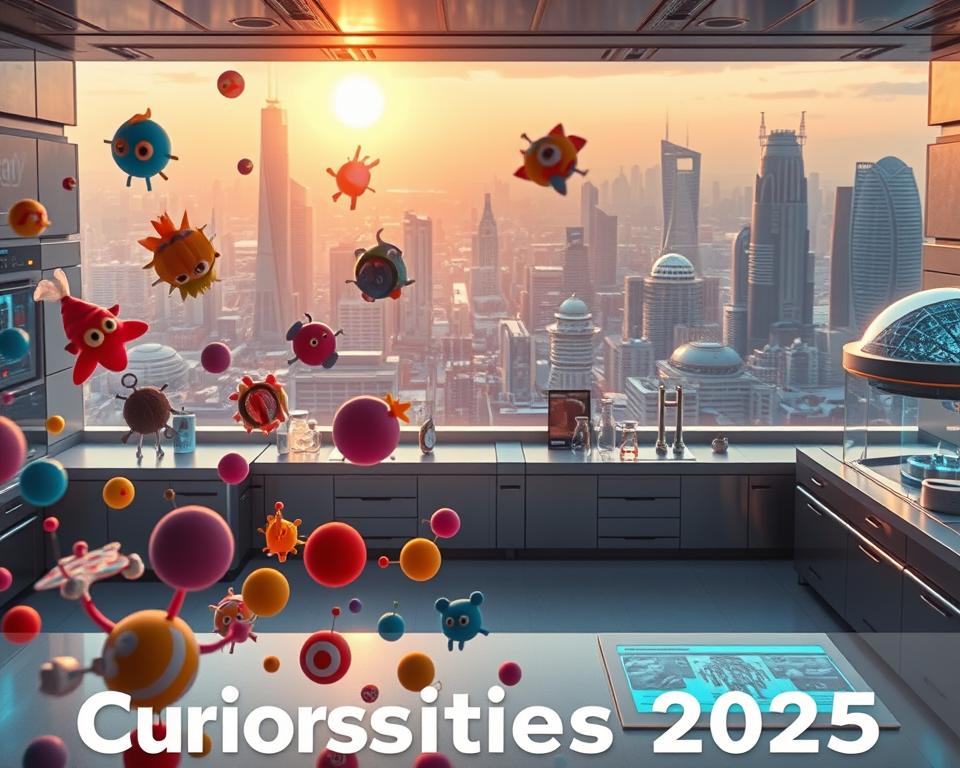Anúncios
Curious why a smile can lift your mood or why your name jolts your attention? You’re about to dive into a short, friendly tour of surprising human behavior that reads like a secret playbook for everyday life.
People act from instinct, habit, and hidden biases more than they admit. Your brain runs much of the show, using about a fifth of your body’s energy while sorting risks, social cues, and memories.
Multitasking drains focus, sleep helps lock in what you learn, and physical activity nudges your mood through endorphins. Social rejection lights up pain circuits, memory rebuilds itself each time, and the bystander effect can silence helpful instincts.
These insights make watching others feel like decoding behavior in real time. For more evidence-backed details, check this short guide on psychology facts that sharpen how you read people and act in life.
Key Takeaways
- Your mind and brain steer many choices through quick, unconscious shortcuts.
- Multitasking reduces efficiency; focus beats split attention.
- Sleep and exercise strengthen memory and mood.
- Social cues, like a smile or a name, have immediate power.
- Memory is reconstructive—vivid moments leave stronger traces.
Why these bizarre human behavior insights matter right now
Many of your choices start with a quick feeling before your thinking brain catches up. That pattern means you can learn to act wiser in the moment, not only after the fact.
Use these takeaways to sharpen your decisions and relationships. Gratitude and forgiveness cut stress and support well-being. Helping others boosts life satisfaction and gives you purpose.
Social connection also protects physical health. Strong ties lower loneliness-linked immune and inflammation risks, according to studies and peer-reviewed research.
- Guard your attention and brain energy by limiting multitasking and cutting noise.
- Turn information into action with small routines: write goals, rest more, move often.
- Spot group dynamics so you can step in when people need help.
“Most decisions begin emotionally before logic rationalizes them.”
These are not just trivia. They are practical psychology facts rooted in research. Use them at work and home to feel more in control of your life.
Mind-bending cognition: how your brain steers decisions and attention
Your brain quietly prioritizes and prunes information, steering what you notice and what you ignore.
Your brain can’t truly multitask—task switching drains energy and focus
When you flip between tasks your mind pays a hidden cost. Each switch steals a bit of energy and reduces attention, so mistakes rise even if you feel productive.
Thinking in a second language makes calmer choices
Using another language lowers hot emotion and helps you weigh options more steadily. Try it for tough decisions—you may pick a clearer path.
Doodling keeps your mind anchored and supports memory
Light sketching prevents your thoughts from wandering. Doodling during calls or lectures can boost recall by keeping the senses engaged.
Mild fatigue can loosen filters and spark creativity
When you’re slightly tired, your mind relaxes strict rules. That loosened lens can surface unexpected ideas—capture them, then return later to edit.
Your own name hijacks attention in a blink
Hearing your name snaps your focus to the present. Use that cue in meetings or learning to regain attention fast.
- Quick wins: batch tasks, silence alerts, and protect deep work to preserve brain function.
- Tap neuroplasticity: learn a new skill so neurons rewire and support better habits.
- Lean on these facts to set kinder expectations for your mental bandwidth.
“Small changes—fewer switches, brief doodles, and cleaner choices—give your brain a chance to do better work.”
Emotions in control: surprising social and feeling-driven behaviors
Emotions can take the wheel and shape how you connect with others.
Your brain prioritizes negative cues—so criticism often feels heavier than praise. This negativity bias helps you spot threats fast, which is useful but can make negative moments linger longer than they should.
Bad sticks stronger than good
Because the brain flags danger quickly, you scan for risks before rewards. That explains why one critical line can outweigh many compliments in your memory.
Rejection actually hurts
Social rejection lights brain areas tied to physical pain. Knowing this can help you meet hurt with empathy and calm, rather than blame.
Simple cues that shift mood
A smile triggers facial feedback that nudges mood upward. You can use a brief smile to prime kinder responses in tense talks.
You mirror people you like
Subconscious mirroring builds quick rapport. When you notice it, you can deepen connections and improve relationships with small, genuine gestures.
Gratitude, forgiveness, and calm blue
Tiny gratitude or forgiveness practices lower stress and support immune health over time. Adding calm blue tones in backgrounds or lighting can reduce anxiety and steady your reactions during pressure.
- Quick takeaways: name the emotion to regain control, smile to shift mood, and use mirroring to build trust.
- These small moves help you act with more empathy toward others and yourself.
“When you name what you feel, you regain control of how you act with others.”
Memory, perception, and the stories your mind rewrites
Your mind edits past scenes every time you replay them, so memories change more than you think.
Memory is reconstructive: each recall stitches new detail into old traces. That means what you remember next week may not match what you felt today. Treat recollection with curiosity rather than certainty.
Emotion acts like highlighter ink. Strong feelings make events stick longer and brighter in your brain, while neutral moments often blur and drift away.

Seconds shape what you keep
Visual traces last about 20–30 seconds; echoic traces about 2–4 seconds. If you want to save new information, grab it fast and give it your attention.
Practice in your head counts
Visualization recruits many of the same neural circuits as real practice. Mentally rehearsing a talk or a skill helps consolidate learning when actual practice time is scarce.
- You’ll learn why recall reconstructs reality, so give memories room to shift.
- Use brief reviews and one-sentence summaries to protect key information over time.
- Write worries down before bed to clear mental clutter and aid sleep, which boosts memory consolidation.
“Memory changes with every telling; the goal is to keep what matters and let the rest go.”
From childhood to personality: patterns that shape who you are
Small routines and steady care in childhood lay a blueprint for emotional strength as you grow. Early bonds shape how you handle stress, form friendships, and respond to change.
Early secure attachment comes from consistent, attentive care. Babies who get predictable support tend to develop better emotional regulation and stronger social connections later in life.
Early secure attachment predicts stronger emotional regulation later
When infants receive sensitive care, they learn trust and self-soothing. That foundation supports resilience and healthier relationships as you move through life.
Bilingual experience reshapes brain structure and supports cognition
Learning and using more than one language can alter your brains: studies link bilingual experience to less gray-matter loss and stronger white-matter connections. That change helps attention and mental flexibility across decades.
Personality stays fairly stable over time, even as life events nudge it
Your core personality often feels familiar across years. Events and new roles tweak how you express traits, but steady patterns, shaped by early care and experiences, remain.
- Quick takeaways: early care builds emotion skills; bilingual learning supports cognitive health; stable personality meets gradual change.
- Curiosity and lifelong learning protect your mind and help keep memories sharper as you age.
- Invest in lasting connections—friendships formed in young adulthood often endure and boost resilience.
“Small, steady behaviors shape identity more than rare big moments.”
Your brain, body, and behavior: science-backed connections
The human brain runs a high-cost operation inside a small frame. It uses about 20% of your body’s energy, so what you eat and when you rest matters for focus and stamina.

Energy and daily demands
The brain needs steady fuel. Short breaks, balanced meals, and timed light help keep you sharp through the day.
Neuroplasticity and change
Your brain keeps rewiring across life. New skills, practice, and small challenges let neurons adapt and form useful habits.
When stress affects the body
Chronic stress can disrupt digestion, immunity, and working memory. Spot stress early and use recovery rituals to protect focus and overall health.
Sleep, light, and memory
Night rest consolidates memory and steadies emotions. Morning light also helps reset circadian rhythms and lifts mood.
Move to boost mood and focus
Short bursts of activity release endorphins and sharpen attention. Treat physical movement as a quick reset between demanding tasks.
- Practical wins: plan breaks, guard sleep, and add brief movement to lift brain function and mental health.
“Small daily shifts compound into steadier focus and better recovery.”
psychology facts that feel weirdly true in daily life
Simple cues—anonymity, a screen, or a crowd—change how you show up in the moment. You see this in online disinhibition, the bystander effect, and in everyday nonverbal signals.
Online anonymity lowers inhibition, changing how you speak and act
When people feel unseen, accountability drops. That makes risky or unfiltered behavior more likely online.
Tip: add small accountability steps—pause before posting, log out for an hour, or ask a friend to review heated messages.
The bystander effect makes help less likely when more people are around
More witnesses can dilute responsibility, so nobody moves. Decide in advance you’ll be the first to act. A short, clear ask (“Can I help?”) often breaks the freeze.
- Nonverbal cues—posture, tone, eye contact—carry most of the message. Mirror genuinely to build rapport.
- Digital overstimulation shortens attention; try batching notifications and using instrumental music to reduce anxiety and protect focus.
- Micro-habits like a breath, a pause, or a clear verbal request keep control during charged moments.
“Small accountability and a clear first step change group dynamics and online behavior.”
For more reading on surprising human actions, see psychology facts.
Conclusion
A few steady choices—sleep, short movement breaks, and pauses before you answer—stack into big gains for your daily mind.
These short insights show how the human brain, memory limits, and simple routines shape your behavior and decisions. Use attention tricks and naming your emotion to cut reactivity and protect energy.
You can strengthen relationships by showing empathy, noticing cues, and offering help when stress or social pain appears. Tiny habits let neurons rewire so personality strengths—curiosity, courage, kindness—grow over time.
Trust these practical psychology facts as tools. Turn small steps into lasting change for better mental health, clearer thoughts, and a calmer life.
FAQ
What does “task switching” mean and how does it affect your focus?
Task switching is when your brain shifts between activities instead of doing them simultaneously. Each switch costs time and mental energy, so your attention feels thinner and tasks take longer. To protect your focus, try batching similar tasks and using short, uninterrupted time blocks.
How can using a second language change the way you make decisions?
Thinking in a second language often reduces emotional intensity, which can make your choices feel more deliberate and less reactive. When you want clearer judgment on tough topics, mentally framing them in another language can help calm strong feelings and highlight logic.
Does doodling actually improve memory when you’re listening?
Yes. Doodling keeps low-level attention engaged, which prevents your mind from wandering and helps you form more durable memories of spoken information. It works best when your drawings are simple and not overly distracting.
Why does mild tiredness sometimes boost creativity?
Mild fatigue loosens strict mental filters, so you accept more unusual associations and ideas. That relaxed state can spark creative thinking, but chronic exhaustion harms performance, so balance rest with any creativity hacks.
Why does hearing your own name grab your attention so fast?
Your name becomes a highly salient cue through repeated social use, so brain networks flag it instantly. This rapid detection helps you respond quickly in social settings but also means notifications or mentions can pull you out of deep focus.
How does negativity bias shape your daily reactions?
Your brain evolved to prioritize threats more than rewards to protect you from danger. That bias makes negative news or criticisms stick longer than praise, so you need to deliberately note positives to balance perspective.
Can social rejection really feel like physical pain?
Yes. Brain scans show overlapping regions activate during social exclusion and physical hurt. That overlap explains why rejection can feel intense and why social support is crucial for recovery.
Can smiling really change how you feel?
Smiling sends signals to brain circuits that help regulate mood, so even a forced smile can slightly lift your emotional state. Pair it with deep breaths and posture changes for a stronger effect.
How does mirroring someone’s behavior influence relationships?
Mirroring—subtle copying of posture, tone, or gestures—signals empathy and rapport. When you naturally reflect another person, they tend to feel understood and trust you more, which helps build quick social bonds.
What roles do gratitude and forgiveness play in mental well-being?
Practicing gratitude and forgiveness reduces stress hormones and improves emotional regulation. Regularly acknowledging what you appreciate and letting go of grudges supports better sleep, mood, and relationships.
Do colors like blue really affect your anxiety or mood?
Colors can influence emotional states through learned and physiological associations. Calmer hues such as blue often lower arousal and anxiety for many people, so using them in your environment can help steady emotions.
Is memory an exact record of past events?
No. Memory is reconstructive—you rebuild memories each time you recall them, which can introduce subtle changes. That’s why details shift over time and why corroborating evidence matters for important events.
Why do emotional moments feel more vivid than ordinary ones?
Emotion enhances the brain’s encoding processes, so high-arousal experiences form stronger, longer-lasting memories. That’s adaptive for remembering important social or survival-related information.
How quickly do sensory memories fade?
Visual and echoic (sound) memories decay within seconds to a few minutes unless you actively rehearse them. Capturing key details right away helps preserve information for longer recall.
Can imagining an action really improve your skills?
Yes. Visualization activates many of the same neural circuits as physical practice, strengthening learning and preparing your brain for better performance when you actually try the task.
How does early attachment affect emotional control later in life?
Secure early attachments help you develop stable emotion regulation and healthier relationships as an adult. Positive early bonds teach your brain patterns for managing stress and reading social cues.
In what ways does bilingualism alter the brain?
Regular use of more than one language changes neural pathways, improving cognitive flexibility, attention control, and sometimes delaying age-related decline in thinking skills.
Does personality change much over time?
Personality tends to remain fairly stable, but life events and intentional habits can nudge traits gradually. You can still shape habits and behaviors even if core tendencies stay consistent.
Why does your brain consume so much energy?
Despite its small size, your brain runs complex networks of neurons that need constant fuel. It uses about 20% of your body’s energy to support thinking, attention, and bodily regulation.
What is neuroplasticity and why does it matter for adults?
Neuroplasticity is the brain’s ability to rewire itself with experience. It means you can learn new skills, recover after injury, and change habits through consistent practice at any age.
How does chronic stress harm your physical and mental health?
Long-term stress disrupts digestion, weakens immunity, and impairs working memory. Managing stress through sleep, movement, and social support protects both body and mind.
What role does sleep play in memory and emotion?
Sleep consolidates new memories and resets emotional networks. Good sleep improves learning, mood stability, and decision-making, while poor sleep worsens focus and reactivity.
Can exercise really boost mood and concentration?
Yes. Physical activity releases endorphins and increases blood flow to the brain, which enhances mood, attention, and cognitive performance—short workouts help if you’re pressed for time.
How does online anonymity change the way people behave?
Anonymity reduces social consequences, which can lower inhibitions and lead people to speak or act more aggressively or candidly than they would face-to-face. Awareness and clear community norms can reduce that effect.
What is the bystander effect and how does it influence helping behavior?
The bystander effect makes individuals less likely to help when others are present, because people assume someone else will act or they feel uncertain. To counter it, people can assign responsibility and give clear guidance to intervene.



